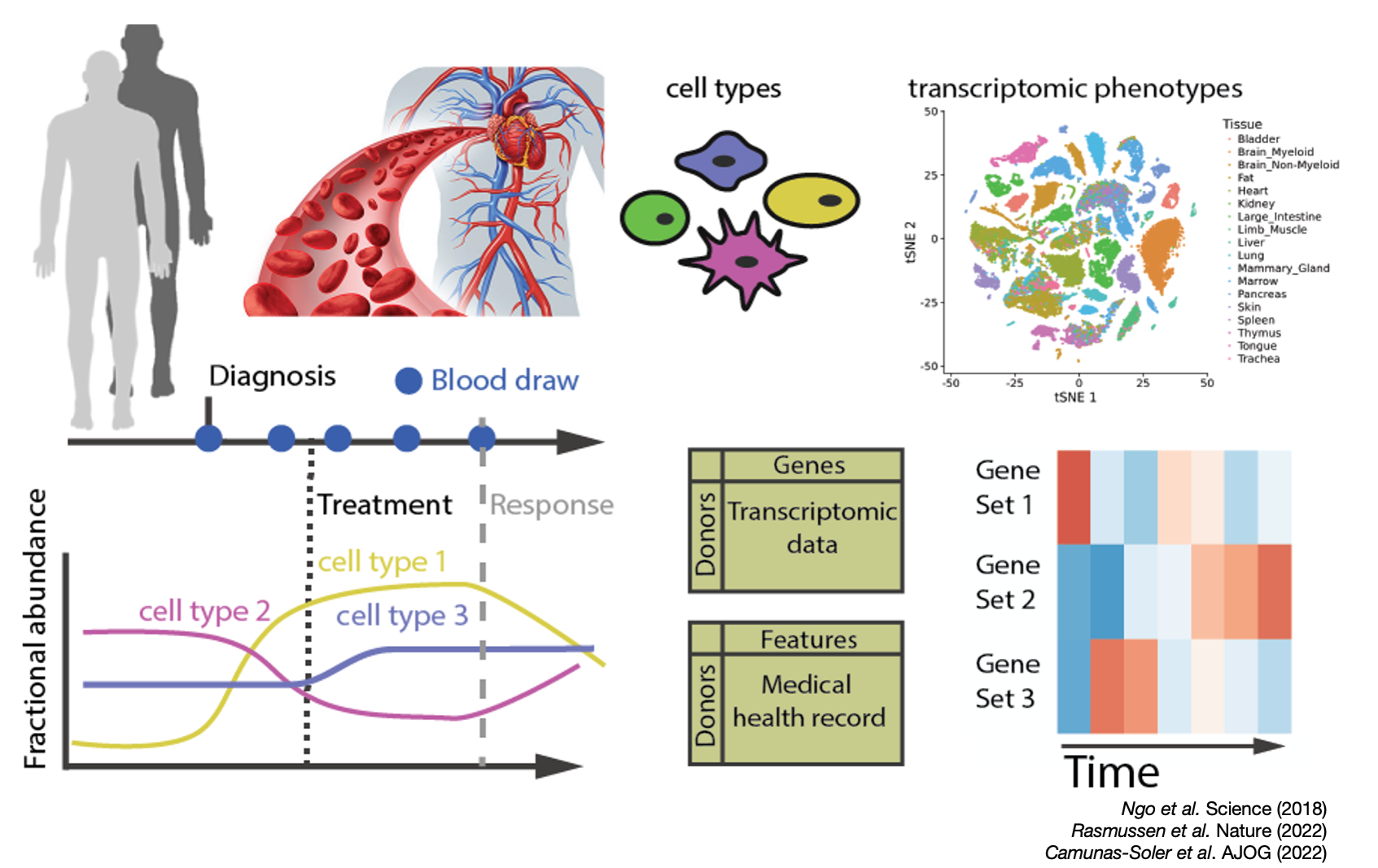About the Camuñas-Soler Lab
The Camuñas-Soler lab stands at the interface of genomics, biophysics, and precision medicine. Our mission is to develop new single-cell technologies and non-invasive molecular diagnostic tools to understand and predict cellular dysfunction in human disease. Our research is highly interdisciplinary in nature and combines approaches from molecular engineering, biophysics, and computational biology.
Single-cell Genomics and Patch-Seq Electrophysiology
One pillar of our work is the development of new single-cell methods to study cellular activities and characterize dysfunctional cellular states in disease. We are interested in understanding how cellular heterogeneity arises within cell types, and to what extent the transcriptome of a cell is a faithful representation of its physiologic state. The lab has a focus on metabolic disorders such as diabetes, but we are excited to explore other systems where single-cell genomics and data-driven approaches may uncover unexpected biology.

We recently pioneered a method to combine single-cell RNA sequencing and patch-clamp electrophysiology (patch-seq) in islet cells in the pancreas. This is important because key cell types in the islets have been found to exist as different subpopulations; for example, not all β-cells (the source of insulin) are the same in a given pancreas. But how these subpopulations may be functionally different or cause diabetes has been unclear.
Patch-seq has allowed us to characterize the functional response of β-cells and link them to the cell’s transcriptome. In this way, we have identified genes that switch their behavior in diabetes, as well as predicted the electrophysiological properties of a cell based on its gene expression profile. We are currently mapping some of these results to additional islet cell types such as α- and δ-cells. Another major unsolved question is how these findings fit within the complex environment of a tissue or a multicellular structure. For instance, in a pancreatic islet, both (i) cell-to-cell interactions and (ii) electrical coupling have a significant role in insulin secretion. We employ recent experimental advances in genomics, imaging, and electrophysiology to tackle these questions.
From a single-cell genomics perspective, our work is also highlighting that some of the variation or “noise” measured in single-cell experiments can be attributed to variation in cellular features such as exocytosis, cell excitability or simply cell size. To date, only a handful of studies have addressed the challenge of coupling single-cell transcriptomic measurements to additional measures of cell function or general physiology. We are interested in using this type of data to characterize “transcriptional noise” and identify the extent to which it can be traced back to physiological properties of the cell.
Non-Invasive Diagnostics Using Cell-Free RNA
Another pillar of the group is non-invasive diagnostic measurements using circulating nucleic acids such as cell-free DNA and RNA. Blood circulates throughout the human body and collects molecules from virtually every tissue. Among these molecules, small fragments of nucleic acids circulate in peripheral blood and can be used to develop diagnostic tools by combining next-generation sequencing and advanced computational methods.

A key feature of cell-free RNA technology is that it enables us to monitor molecular phenotypes by following transcriptomic changes in plasma that reflect changes in cell type composition across the human body. So far, we have shown that this can be used in multiple settings, such as tracking fetal and placental development during pregnancy or to follow immune responses of the host to viral infections.
We are currently developing methods based on the precise quantification of cell-free RNA to investigate tissue disruption and inflammatory responses in multiple human conditions. We are also developing new machine learning algorithms to leverage single-cell RNA sequencing atlases and identify changes in cell type representation during disease onset and as a response to treatment. We envision that these tools will facilitate patient stratification and targeted therapeutics in diseases known to be caused by heterogeneous factors. We are continually looking forward to translating our work into clinical use.